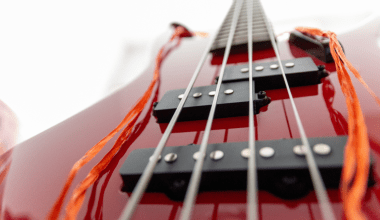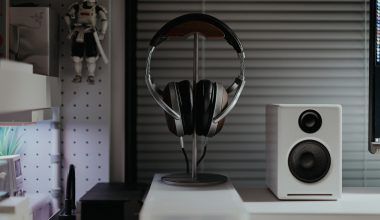When someone disputes a claim made by Deliver My Tune’s YouTube Content ID system, a well-structured process is initiated to address the issue. This ensures both the claimant and the content creator have an opportunity to resolve the matter fairly, with a clear path for further action if necessary. Below is an in-depth look at what happens during this process:
Understanding the YouTube Content ID System
YouTube’s Content ID system is a sophisticated technology that automatically identifies copyrighted material used in videos. When Deliver My Tune distributes or manages content, such as music, through YouTube, it utilizes Content ID to detect when that music is being used in other videos. This system helps ensure that artists, labels, or content owners receive rightful revenue from the usage of their work. However, sometimes a video creator may believe that the claim placed on their video by Deliver My Tune’s Content ID system is incorrect, prompting them to dispute the claim.
Step 1: Reviewing the Initial Claim
Once a claim is made by the Content ID system on a video, it means that YouTube has detected copyrighted material (like music) that matches a track registered by Deliver My Tune. The system automatically flags this usage, assigning rights and directing any revenue generated from the video to the content owner. The claim may result in the video being demonetized for the creator, and revenue is instead directed to the rights holder (artist, label, or other parties represented by Deliver My Tune).
However, the video creator may disagree with the claim, believing they either own the content, have permission to use it, or that the Content ID system made an error. In such cases, YouTube allows the creator to dispute the claim.
Step 2: Dispute Submission
Once the video creator disputes the claim, they must provide detailed reasons for why the content should not be subject to the Content ID claim. Some common reasons for disputes include:
- Fair Use: The creator argues that their use of the content falls under fair use, such as for commentary, criticism, or educational purposes.
- Ownership of the Content: The creator may assert that they are the original creator or rightful owner of the material, and therefore should not have a claim placed on their video.
- Permission: The creator might have explicit permission from the rights holder to use the content.
- Incorrect Identification: Sometimes, the Content ID system may flag content incorrectly, mistaking a sound or song for another, or identifying public domain music as copyrighted material.
Creators are required to back up their dispute with valid evidence or documentation to substantiate their claim. This could include licenses, agreements, or other forms of proof.
Step 3: Content Owner Review
Once a dispute is submitted, Deliver My Tune, acting on behalf of the content owner (such as an artist or label), is notified of the dispute. Deliver My Tune will review the claim and evaluate the evidence provided by the creator. This stage is crucial, as it ensures that both the rights holder and the creator are given a chance to state their case.
Deliver My Tune’s team, which manages the Content ID system for their clients, thoroughly assesses whether the claim is legitimate or if the Content ID system has made an error. If necessary, they may consult with the content owner for additional insights or clarification on the usage rights.
Step 4: Resolution Process
After reviewing the dispute, Deliver My Tune can take one of two actions:
1. Releasing the Claim (Dispute is Valid)
If Deliver My Tune finds that the creator’s dispute is valid, they will release the claim on the video. This means that the video creator can retain the monetization of the video, and any revenue generated from the video will go to them, not the original content owner. This decision typically happens if the claim was mistakenly placed, if the creator owns the content, or if the usage falls under fair use.
Releasing the claim resolves the dispute, allowing the video to continue as normal without any restrictions or revenue redirection.
2. Upholding the Claim (Dispute is Rejected)
If Deliver My Tune concludes that the claim is valid and the content used in the video still infringes on copyrighted material, the claim will be upheld. This means that the video creator will not be able to monetize the video, and any revenue generated will continue to go to the rights holder. The video creator may also face restrictions such as blocked or muted content in certain regions, depending on the nature of the copyrighted material.
However, even at this stage, the creator has options. If they believe their dispute was wrongly rejected, they can escalate the matter.
Step 5: Escalation and Appeal (Optional)
If the claim is upheld and the creator still believes the decision was unjust, they can escalate the dispute further by filing an appeal. In this step:
- YouTube’s Role: YouTube may become more involved by reviewing the appeal or request further information from both the creator and Deliver My Tune to make a decision.
- Legal Action: If the dispute remains unresolved and is particularly contentious, the creator and the rights holder may choose to take legal action to determine the rightful owner of the content or usage rights.
At this point, YouTube acts as a mediator, but legal intervention may be necessary if both parties cannot reach an agreement.
Transparency and Fairness in the Process
Deliver My Tune ensures that the entire process is handled transparently and fairly. Their goal is to protect the rights of the artists and labels they represent while also providing a clear path for video creators to resolve disputes in cases of misunderstanding or incorrect claims. It’s important to note that video creators should always ensure they have the right permissions or licenses for any copyrighted content they use in their videos to avoid such disputes.
In summary, when someone disputes a claim made by Deliver My Tune’s YouTube Content ID system, a thorough process is initiated that includes submission of a dispute, review by Deliver My Tune, and resolution of the claim. If necessary, the creator can escalate the dispute. This system ensures fairness, giving both content owners and creators the opportunity to resolve issues regarding the use of copyrighted material in a structured manner. Deliver My Tune’s approach to handling disputes aims to protect the rights of their clients while offering content creators a clear, transparent path for resolving conflicts.
For more detailed information, you can explore Deliver My Tune’s official website and blog for guidelines on Content ID claims and dispute resolution processes





